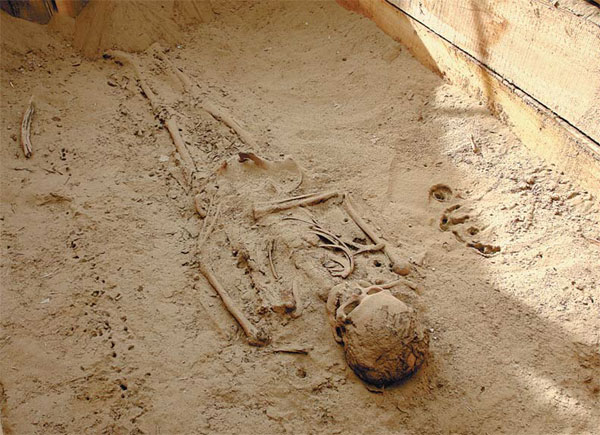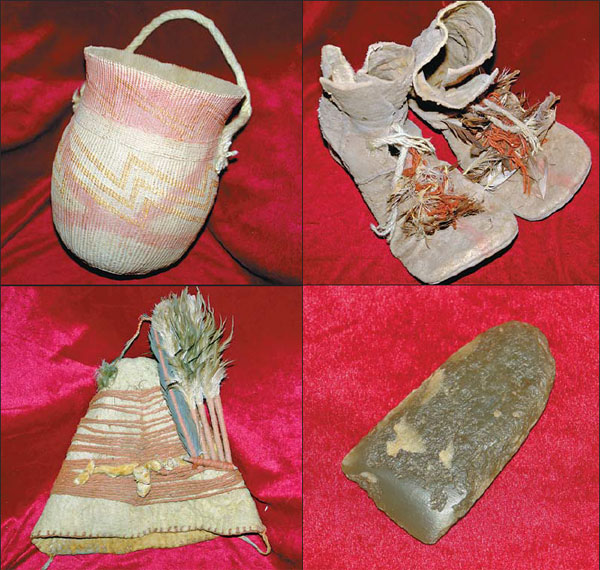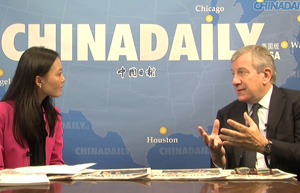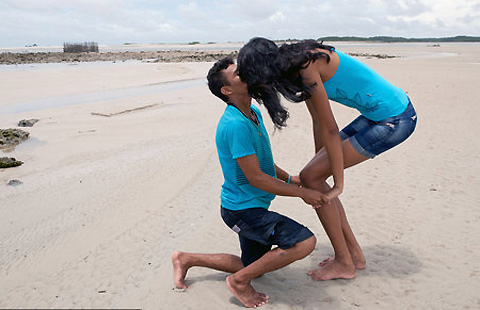Meeting mummy in the valley of the giants
Updated: 2014-05-14 07:03
By Cui Jia and Gao Bo (China Daily USA)
|
||||||||
Archaeologists are examining claims that the area has long been home to a number of different races, report Cui Jia in Alar and Gao Bo in Turpan, Xinjiang Uygur autonomous region.
As he carefully raised the lid of a long, boat-shaped wooden coffin discovered at an ancient burial site in the Xinjiang Uygur autonomous region, Liao Zhaoyu joked to his colleagues that they had discovered one of the fabled giants of Chinese legend.
When the lid was finally opened and Liao caught his first glimpse of the body inside, he was astonished to see a golden-haired figure that was even taller than Yao Ming, the famous 2.26-meter-tall basketball player.
|
The skeleton of a young woman was one of the discoveries at Kungang tomb in Alar in the south of the Xinjiang Uygur autonomous region. The tomb is renowned for its giant mummies. Provided to China Daily |
|
Clockwise from top: Items found at the Kungang tomb, including a basket made of straw, a pair of leather boots, a jade axe and a felt hat. Experts say the tomb could date back 4,600 years. Photos provided to China Daily |
Even though the discovery happened more than five years ago, Liao, director of the institute of the Culture of the Western Region at Tarim University in Alar, couldn't hide his excitement when he recalled the moment he came face to face with the tallest man of a "tribe of giants".
The local people dubbed the sand dunes that contained a number of oversized coffins "the valley of the giants", so Liao called the tomb "Kungang", the ancient name of Alar.
European features
"The skeleton of the tallest mummy discovered so far is about 2.3 meters, and the coffin is about 2.8 meters long, but medical experts say the man may have been even taller when he was alive. In addition to features similar to those of ancient Europeans, such as blond hair and high cheekbones, many of the mummies or skeletons have large frames, more than 2 meters tall," said the 40-year-old, who was one of the first experts to explore the site in 2003 at the request of local farmers.
However, Liao and his team were not the first people to find the burial site. The vast tomb was originally discovered in the early 1980s by farmers attempting to flatten the sand dunes so they could plant crops. Unfortunately, instead of reporting their discovery, the farmers used many of the coffin planks as firewood and left the site badly damaged.
Many years passed before the farmers finally told their tale, and it wasn't until 2013 that the importance of the site began to be understood when researchers from Queen's University in Belfast in the United Kingdom analyzed bones, hair and seeds and concluded that the tomb could date back 4,600 years, Liao said.
"Human bones and pieces of coffin made from the wood of the Populus Euphratica (also known as the Euphrates or desert poplar) were visible everywhere in the sand dunes when I visited the site for the first time. It was obvious that the tomb had been raided, but we still managed to find five intact mummies," he added.
Alar sits at the northern edge of the world's second-largest desert, the Taklimakan, and on upper reaches of the Tarim River, which nourished a number of ancient civilizations in Xinjiang, and Liao instinctively felt that Kungang could related to one of them.
Deterioration
To ensure that the site was adequately protected, fences were hastily erected and a guard was hired, and now only one female mummy, wrapped in fragments of clothing, is on display in the exact location where she was found. "Her clothes were in one piece when she was first discovered and her face and eyebrows were clearly visible, but now the skeleton is showing and her condition deteriorates every day," said the guard. The skin has also flaked off two mummies kept at the museum at Tarim University, exposing their skeletons.
According to Liao, more mummies may still be buried in the sand dunes, but the institute doesn't have the funds or expertise required for effective excavation and preservation, so the experts have decided not to dig any further.
Ancient dried-up river courses are visible near the tomb and the poplar trees are still growing strong. Relics, including rudimentary boots, baskets made from grass and reeds, and wooden phalluses and statues, are culturally consistent with those found in the famous Xiaohe, or "Small river", tomb at Lop Nur, a dried-up lake in southern Xinjiang, but the Kungang mummies are much taller, according to Liao.
The well-preserved mummy of a young woman, dubbed "The Beauty of Xiaohe", was among the 30 mummies found at the lake site, the earliest of which dates from around 4,000 years ago.
Liao said a living area has been identified close to Kungang, but its archaeological importance is limited because the site has been severely damaged by the elements and grave robbers.
The size of the tomb and the huge number of relics discovered indicate the existence of a huge population with a long history, according to a research paper published in April 2013 by Victor Mair of the University of Pennsylvania in the US and Cheng Fangyi of Tsinghua University in Beijing.
The authors suggested that the relics Liao claims to have discovered at Kungang may actually derive from an ancient cemetery on Alar's southern border and argued that they had been handled unprofessionally and may have been inadvertantly lumped together with material from other areas.
The human museum
Xinjiang is known for its dry climate and sandy landforms, resulting in ancient corpses dehydrating quickly and mummifying, so the region is a museum of the human race, according to Tian Weijiang, a researcher at the Xinjiang Academy of Social Sciences.
"Archaeological evidence indicates that human beings from different races have lived in Xinjiang since prehistoric times because of the area's location on the border of Central Asia. In the Xiaohe tomb, we found the remains of ancient Europeans and Mongolians," he said.
Xu Dongliang, deputy head of the Technological Protection Institute at the Academy of Turpan Studies, said the combination of low rainfall, high temperatures and arid air was a key element in the preservation of relics in Turpan prefecture, especially tombs and mummies.
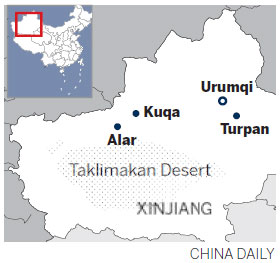
Xu, 42, had recently returned from Changchun in Jilin province, where more than 170 ancient mummies unearthed in Turpan were being studied at Jilin University, which has one of China's leading molecular archaeology labs, as part of the first major study into physical anthropology, or behavioral and biological variation, in Xinjiang.
The mummies - children, adolescents, middle-aged and elderly people thought to have lived 2,500 to 3,000 years ago - were excavated from the Shengjindian tomb complex in Shengjin township and the Jiayi tomb complex in Yar township.
Experts at Jilin University's Research Center for Chinese Frontier Archaeology will use modern technology, including DNA detection, geological and pathological tests, to analyze the samples and provide archaeologists with more information.
Xu said the mummies were buried in different types of tombs, and the research will throw more light on the migratory habits and lifestyles of these ancient nomads and the relations between different races.
Earliest wooden leg?
For example, earlier research on the mummy of a middle-aged man from about 2,300 years ago revealed that he had been fitted with a prosthetic leg more than 100 years before the Roman Capua Leg, one of the earliest-known prosthetic limbs.
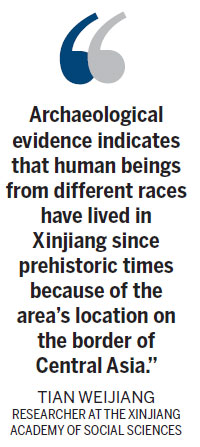
"Making discoveries about the tombs and the mummies is also a process of understanding the history of Xinjiang and its people," Xu said. "Seeds excavated from the Supeixi tomb complex in 2003 show that grapes have been planted in Turpan for more than 2,500 years. The fruit is still the prefecture's specialty."
Xinjiang is extremely rich in archaeological relics, but lacks the high-tech research equipment and expertise needed for authoritative studies. Also, preserving mummies or the remains of ancient kingdoms in deserts is a difficult task, Xu said.
"The vast deserts in Xin-jiang have helped to preserve the historical relics, but they also make the sites difficult to maintain once excavation work begins because the sand dunes shift with the winds," he added.
Despite the challenges, the future of the preservation and study of archaeological discoveries in Xinjiang is still promising. "Many institutes are interested in our resources and have offered help. Jilin University will set up a station in Turpan and dispatch researchers with mobile equipment. That will reduce the influence of environmental changes and transport (from Xinjiang to Jilin) if we want to conduct tests," Xu said, adding that his team will conduct research into mummified animals in the near future.
Xu's laboratory is currently restoring silks discovered in an ancient tomb. "Every detail of the restoration work requires careful planning because the desert has made the fabric extremely fragile and it could easily break into pieces just at a touch, so we always take great care of these priceless artifacts," he said.
Contact the writers at cuijia@chinadaily.com.cn and gaobo@chinadaily.com.cn
(China Daily USA 05/14/2014 page7)
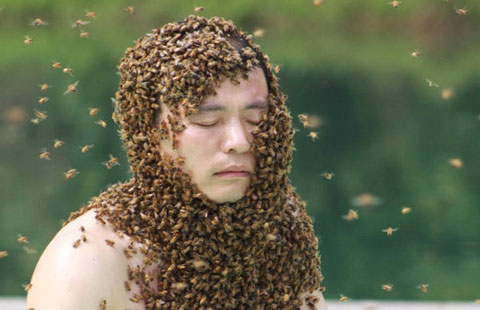
 Jiangxi man abuzz over new Guinness bee record
Jiangxi man abuzz over new Guinness bee record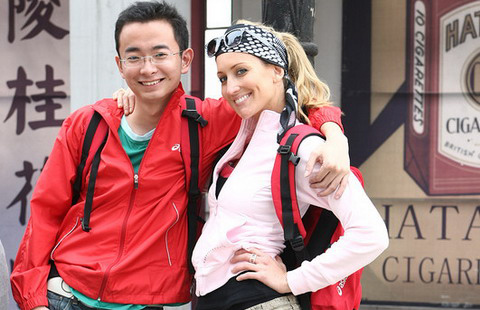
 Forum trends: How to make friends with foreigners
Forum trends: How to make friends with foreigners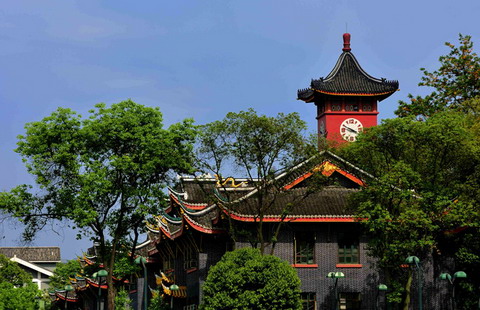
 China's prettiest universities
China's prettiest universities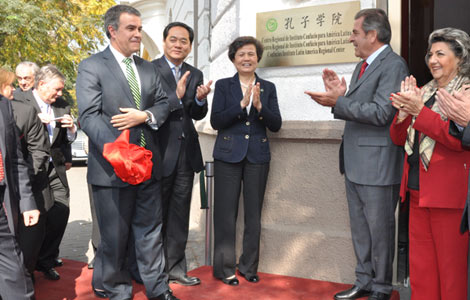
 Confucius Inst launches Latin American hub
Confucius Inst launches Latin American hub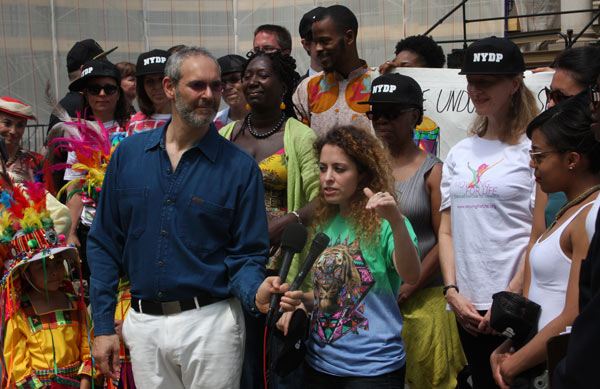
 More than 10,000 dancers will parade in NYC
More than 10,000 dancers will parade in NYC
 Abercrombie plans 100 new stores
Abercrombie plans 100 new stores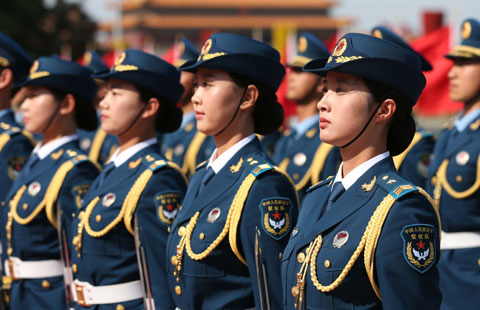
 PLA Honor Guard debuts female members
PLA Honor Guard debuts female members
 Roof garden in Liuzhou
Roof garden in Liuzhou
Most Viewed
Editor's Picks

|
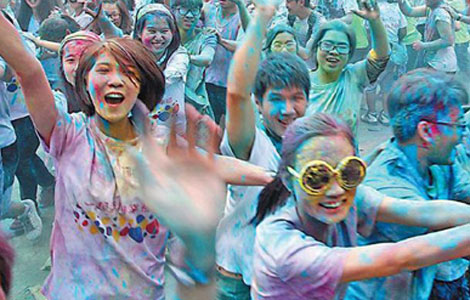
|
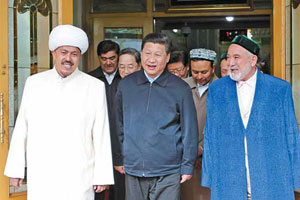
|
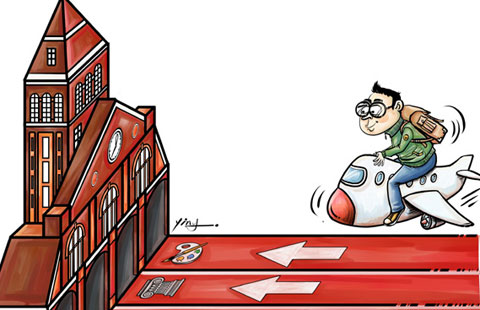
|
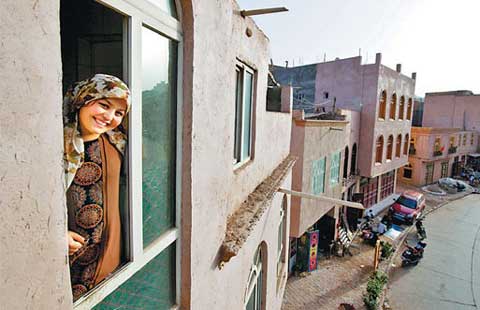
|

|
Today's Top News
US-China 'Dialogue' will include S. China Sea
Li: More common interests with US
China warns US over sea issue
Former policemen convicted of forced confession
Govt to help grads start businesses
Banks told to act on home loans
School tests blamed for suicides
Yuan fall 'dictated by market'
US Weekly

|

|
